Ever wondered how that random gadget you ordered at midnight shows up at your doorstep before you’ve even finished your coffee the next day? Yeah, that’s Amazon’s fulfillment strategy working its magic behind the scenes. It’s not just about warehouses and delivery trucks—it’s this whole intricate dance of technology, logistics, and old-fashioned hustle that keeps the e-commerce giant ahead of everyone else.
The Building Blocks: How Amazon’s Fulfillment Strategy Actually Works
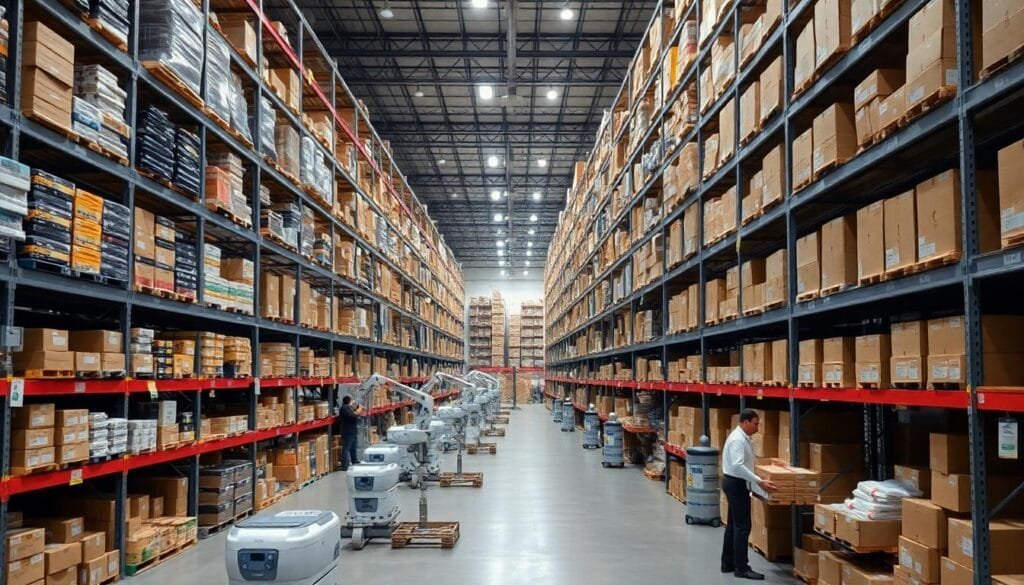
So I was organizing my garage the other day—okay, who am I kidding, I was just moving piles from one side to another—and I started thinking about how Amazon manages millions of products without imploding. Turns out, Amazon’s fulfillment strategy is built on three main options that sellers can choose from, each with its own flavor of convenience and control.
Fulfillment by Amazon (FBA): The “Take My Stuff, Please” Approach
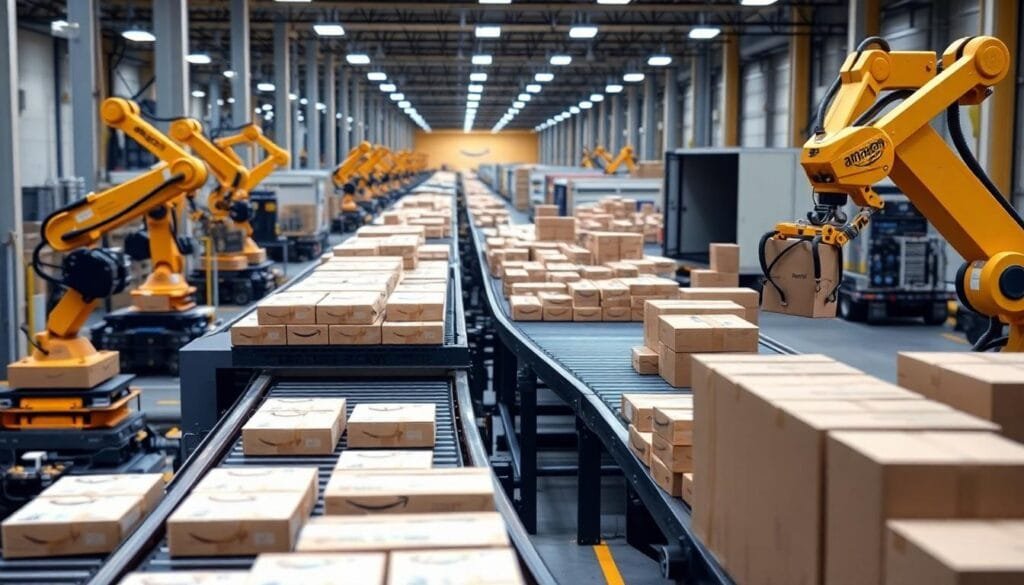
FBA is basically Amazon saying, “Hey sellers, ship your products to our warehouses and then go take a nap—we’ve got this.” Once sellers send their inventory to Amazon, the company handles everything else: storage, packaging, shipping, customer service, and even those dreaded returns.
Why sellers jump on this:
- Trust factor: Products get that coveted Prime badge, which is basically a trust signal that makes customers click “Buy Now” instead of “Save for Later”
- Prime customer access: These are the folks who shop on Amazon religiously and spend significantly more than casual browsers
- Operational simplicity: Sellers can focus on product development or marketing rather than stuffing envelopes at 2 AM
Want more details? Amazon’s guide to FBA breaks it down without the corporate fluff.
Fulfillment by Merchant (FBM): The DIY Route
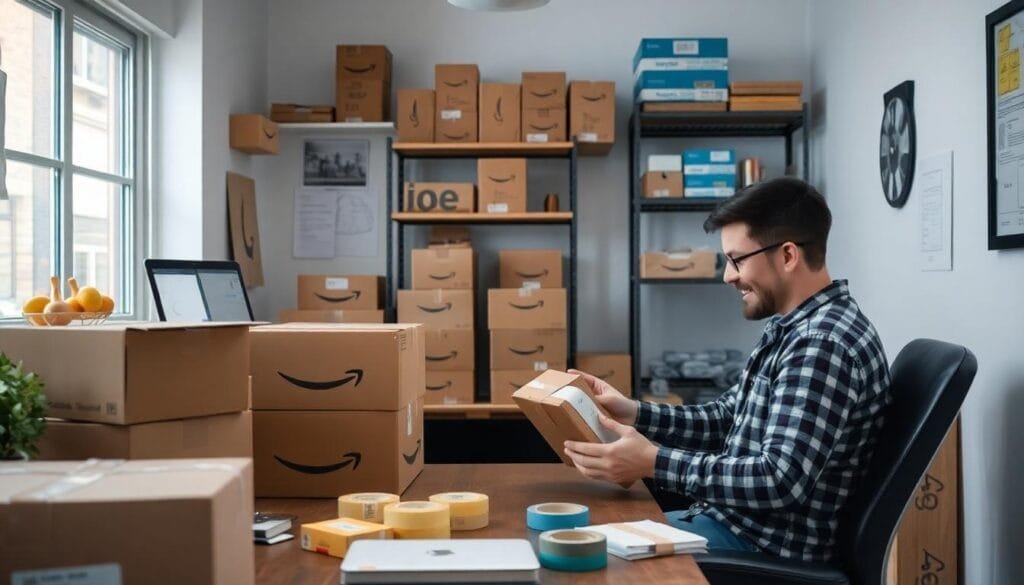
FBM is for the control freaks (I say that with love). These sellers handle everything themselves—storing products in their garage, basement, or warehouse, packing orders while watching Netflix, and handling their own shipping and customer service.
What makes this attractive:
- Cost control: No FBA fees eating into profits
- Flexibility: Special packaging? Handwritten thank-you notes? No problem when you’re in charge
- Direct customer relationships: Some sellers actually enjoy talking to the humans who buy their products
Trying to decide between FBA and FBM? This comparison guide helps without pushing you one way or the other.
Seller Fulfilled Prime (SFP): The Hybrid Approach
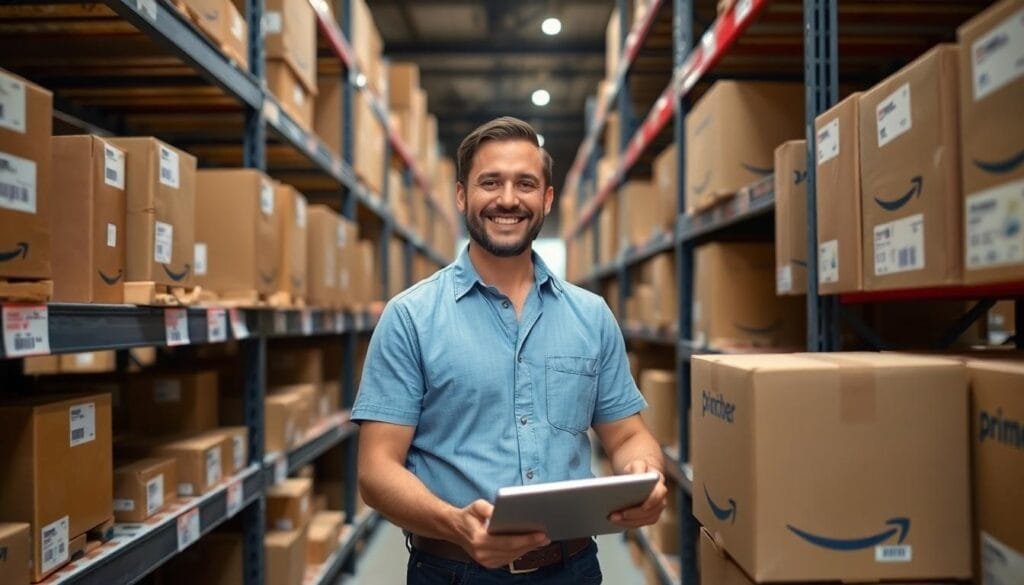
SFP is like having your cake and eating it too—sellers manage their own fulfillment but still get to use the Prime badge. It’s the middle ground for businesses that want control but also crave that Prime visibility.
The appeal here:
- Sales boost: That Prime badge is like a sales magnet
- Inventory control: Products stay at your location until sold
- Customer satisfaction: Fast shipping makes buyers happy without surrendering your entire operation to Amazon
Curious about qualifying? Amazon’s SFP page has the nitty-gritty details.
The Tech Behind the Curtain: Not Magic, Just Really Good Engineering
You know how Amazon seems to know what you want before you do? Or how packages move through their system with mind-boggling efficiency? That’s not coincidence—it’s Amazon’s fulfillment strategy powered by some seriously impressive technology.
AI and Machine Learning: The Digital Crystal Ball
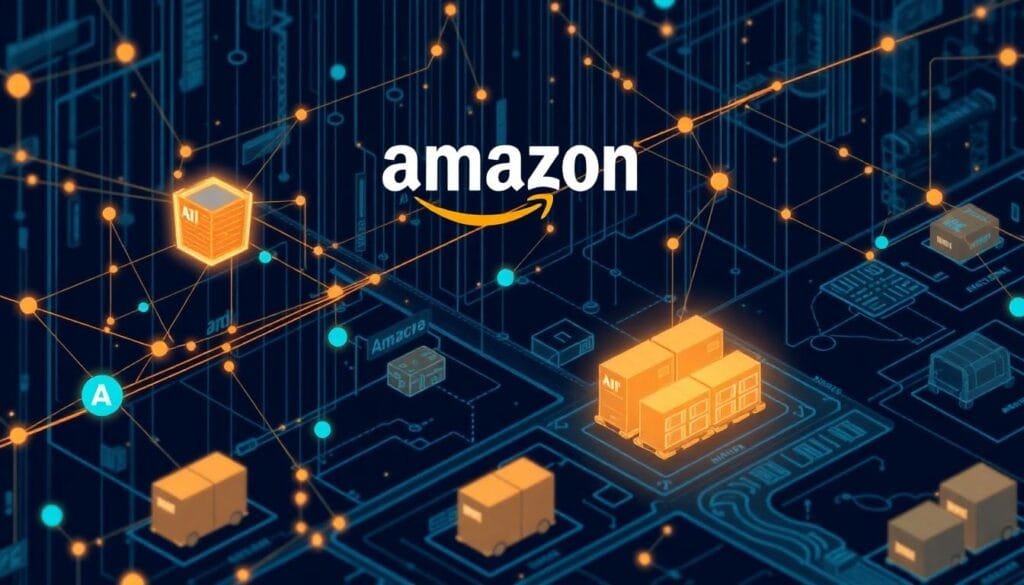
Amazon uses AI and machine learning to basically predict the future—or at least, predict what you’re going to buy next week.
Their demand forecasting is wild. They analyze everything from past sales to seasonal trends to how long you hover over a product page, and then use that data to position inventory strategically. So when you suddenly decide you need a waffle maker at 11 PM, one is likely already sitting at a fulfillment center near you.
Their route optimization is even cooler. Machine learning algorithms consider variables like traffic patterns, weather forecasts, and package volume to figure out the most efficient path for delivery drivers. It’s like having a super-powered GPS that doesn’t just know the fastest route but can anticipate problems before they happen.
Want to see how deep this rabbit hole goes? Check out this article on Amazon’s AI-powered supply chain.
Robots: Not Taking Over, Just Taking the Heavy Lifting
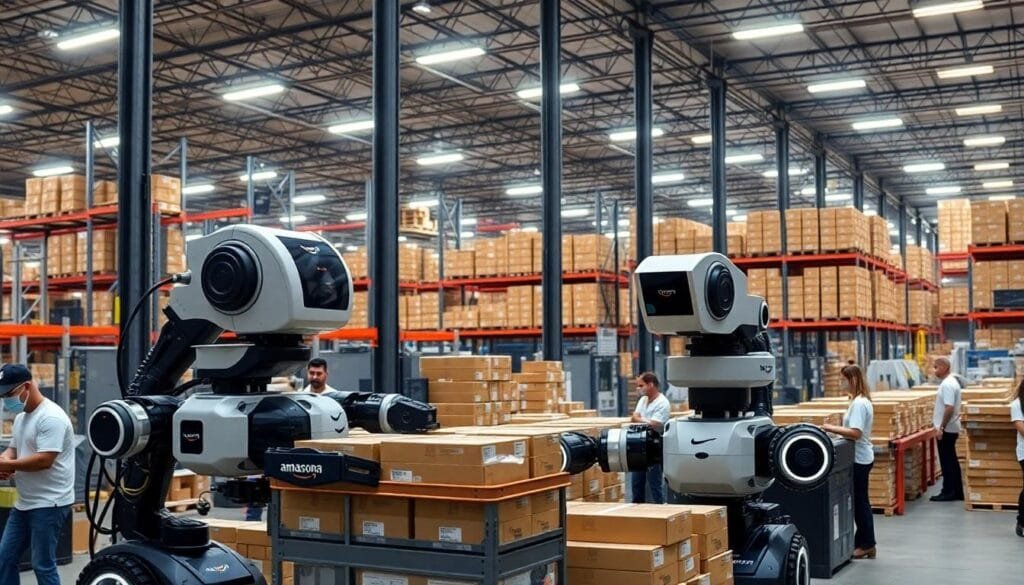
Inside Amazon’s warehouses, the future isn’t coming—it’s already unpacking boxes. With over 750,000 robots working alongside humans, Amazon’s fulfillment strategy includes mechanical helpers that make everything faster and more precise.
There’s “Hercules” and “Pegasus” moving stuff around, but my personal favorite is “Sparrow”—a robotic arm that can identify and sort millions of different items with scary accuracy. These machines cut down the time to fulfill orders dramatically while maintaining a level of precision humans would struggle to match consistently.
And here’s a thought—robots aren’t just about efficiency. They’re also taking over the kinds of jobs that wreck human bodies: heavy lifting, repetitive motions, and other injury-prone tasks. This lets human workers focus on more complex, less physically demanding work.
Curious about these robot helpers? Amazon’s robotics page shows them in action.
What This Means for Customers and Sellers
Amazon’s fulfillment strategy isn’t just about moving boxes efficiently—it’s designed to create happy customers and successful sellers. Here’s how that plays out in practice.
For Customers: Speed That Changes Shopping Habits
Amazon has fundamentally changed what we expect from online shopping. Remember when waiting 5-7 business days was normal? Now we get antsy if our order isn’t here in 48 hours.
- Modern expectations: Two-day shipping isn’t a perk anymore—it’s the baseline. And in some areas, same-day delivery is becoming the new standard. Research from McKinsey indicates fast delivery is now among the top three factors influencing online purchase decisions¹.
- Loyalty loops: When you know you can count on Amazon for fast, reliable delivery, you keep coming back. It’s not rocket science—it’s just good business.
Want to explore Prime shipping benefits in detail? Amazon Prime Shipping lays it all out.
- Shopping frequency: Prime members shop more often and spend about twice as much annually compared to non-members. When ordering is frictionless and delivery is predictable, you end up shopping more often without even realizing it.
For Sellers: Growing Without the Growing Pains
Amazon doesn’t just serve customers—it gives businesses a platform to scale without tripping over logistics.
- Complexity reduction: With FBA, sellers don’t need to become logistics experts overnight. The fulfillment network handles the operational headaches, so sellers can focus on what they do best.
- Prime customer access: Getting that Prime badge through FBA is like having a VIP pass to Amazon’s most valuable customers. It’s an immediate credibility boost and visibility enhancer.
According to SphereWMS, FBA sellers can see up to a 30-40% increase in sales after adopting the program, largely due to improved search rankings and Prime eligibility².
- Growth support: Whether you’re running your business from a kitchen table or managing multiple warehouses, Amazon’s infrastructure scales with you. You don’t need massive capital investment to start serving a national or global customer base.
- Global reach: Through Amazon’s Global Selling program, even small businesses can tap into international markets without having to navigate the complexities of global shipping and customs alone.
The Evolving Landscape: Not All Smooth Sailing
Look, Amazon’s fulfillment strategy isn’t perfect. They’re facing challenges just like everyone else in the logistics world. But how they’re tackling these obstacles shows why they continue to dominate.
The Money and Rules Problem
Running a global fulfillment network isn’t cheap, and the regulatory landscape keeps getting more complex.
- Rising costs: FBA fees have gone up about 15% over the last three years³. That’s forcing sellers to get creative—optimizing inventory, being selective about what products they offer through FBA, and looking for ways to improve margins.
- Regulatory headaches: Amazon is dealing with different rules in different countries—packaging laws in Europe, antitrust investigations in the US, and various compliance requirements worldwide. In 2024, regulatory pressure actually forced Amazon to reopen its Seller Fulfilled Prime program after suspending new applications for years.
- Seller adaptations: Smart sellers aren’t putting all their eggs in one basket. Many are adopting hybrid models—using FBA for fast-moving products but keeping slower-moving inventory in their own warehouses. Others are exploring third-party logistics providers as alternatives to balance costs and control.
Going Green: Not Just a PR Move
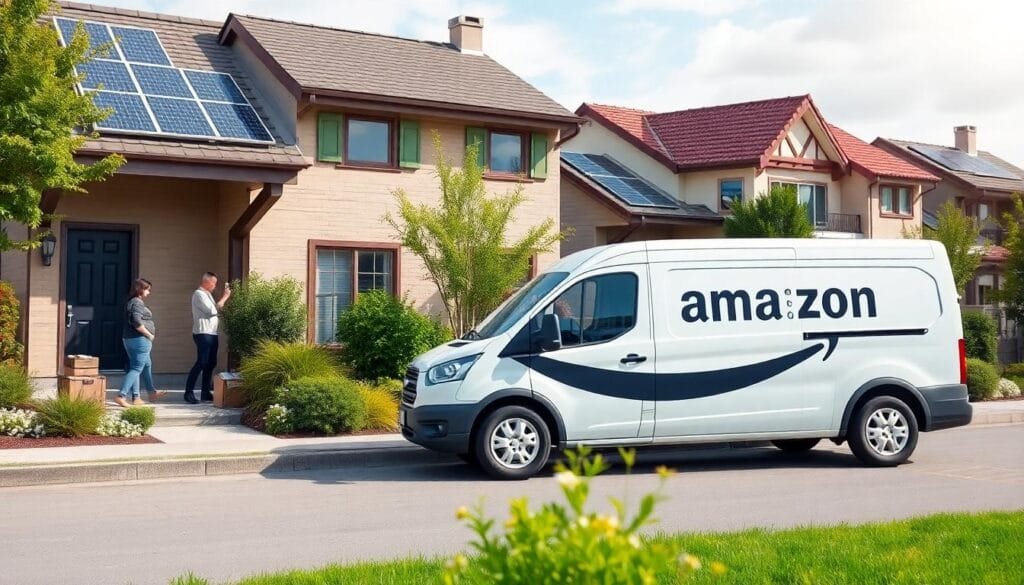
Sustainability used to be a nice-to-have; now it’s becoming essential to Amazon’s fulfillment strategy as consumer awareness grows.
- Electric vehicle fleet: Amazon is rolling out 100,000 electric delivery vehicles by 2030 as part of its “Climate Pledge.” They’re already on the roads in major cities, cutting emissions while delivering packages.
- Smarter packaging: Ever ordered a tiny item and received it in a massive box? That happens less now because Amazon has been optimizing packaging and consolidating shipments. It’s better for the planet and saves them money on materials and shipping.
- Supply chain optimization: Using AI and predictive analytics, Amazon is getting better at storing inventory closer to where it will be purchased, reducing the distance packages travel and the associated carbon footprint.
- Consumer expectations: As shoppers become more environmentally conscious, sustainability is becoming a competitive advantage. Amazon knows this, and it’s positioning its fulfillment operations to meet these evolving expectations.
Curious about their progress? Amazon’s sustainability report provides the details without the typical corporate greenwashing.
So there you have it—Amazon’s fulfillment strategy isn’t just about warehouses and delivery trucks. It’s a complex, evolving system that combines technology, infrastructure, and a deep understanding of both seller and customer needs. While it faces challenges from rising costs and regulatory pressures, its ability to adapt and innovate keeps it ahead of the competition.
Have you noticed changes in your Amazon delivery experience lately? Are you a seller navigating these fulfillment options? The logistics landscape continues to evolve, and I’d love to hear your thoughts on how Amazon’s approach is shaping your expectations or business strategy.
Disclaimer: Some links in this article may be affiliate links. While we may earn a small commission if you click through and make a purchase, this comes at no additional cost to you.
FAQ’s:
❓ How much does it cost to use Amazon’s FBA program? (Click to Expand)
▶ FBA fees vary based on product size, weight, and category. Typically, there are fulfillment fees (for picking, packing, and shipping), storage fees (based on volume), and optional services like labeling. For current rates, check Amazon’s FBA fee calculator on their seller central platform.
❓ Can small businesses compete effectively using Amazon’s fulfillment network?
▶ Yes, Amazon’s fulfillment strategy actually levels the playing field for small businesses. By leveraging FBA, even small sellers can offer Prime shipping and access Amazon’s vast customer base without building their own logistics infrastructure.
❓ How does Amazon’s fulfillment compare to other e-commerce platforms?
▶ Amazon’s fulfillment network typically offers faster delivery times and more extensive geographic coverage than most competitors. While platforms like Shopify and Walmart have developed their own fulfillment services, Amazon’s scale and technological integration currently give it an edge in delivery speed and reliability.
❓ Is Amazon’s fulfillment network environmentally sustainable?
▶ Amazon is making significant investments in sustainability, including electric delivery vehicles and improved packaging. However, critics point out that the speed-focused delivery model increases carbon emissions compared to consolidated shipping. The company has committed to being carbon neutral by 2040.
❓ How is Amazon using AI to predict customer behavior?
▶ Amazon applies machine learning algorithms to analyze purchase history, browsing patterns, seasonal trends, and even weather forecasts to predict demand. This allows them to position inventory strategically before orders are even placed, reducing delivery times and optimizing warehouse space.






